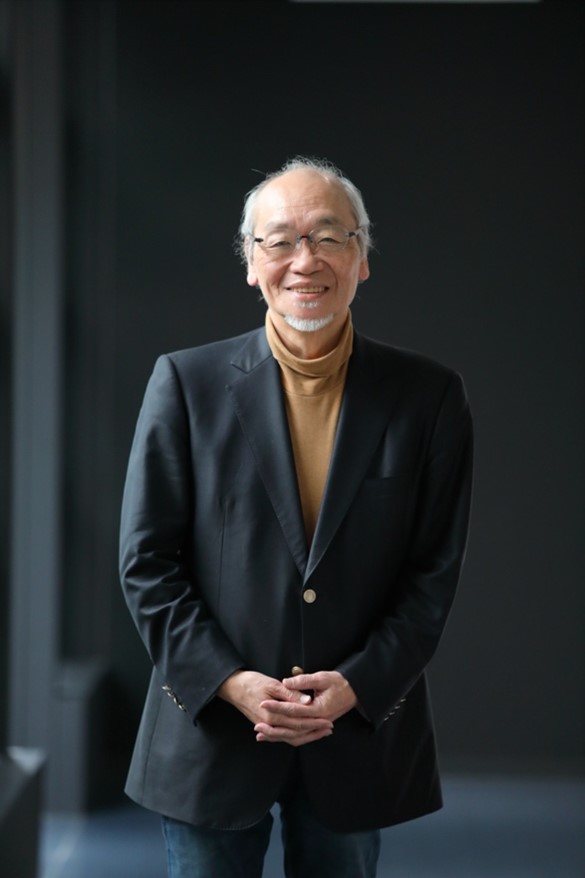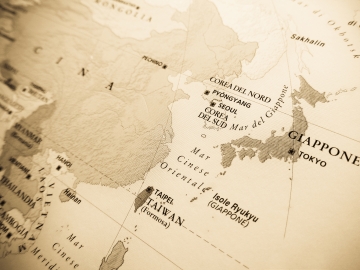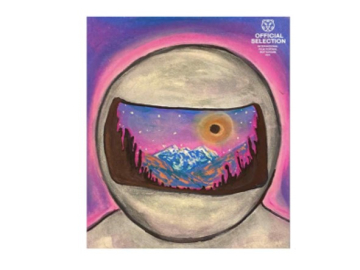The power of medicine and urban planning to revitalize people and cities
In order to bring back vitality to Japan, which is facing a super-aging and shrinking society, a new academic field called MBT (Medicine-Based Town) was born from the encounter between medicine and urban planning. The twin research institutes established with Nara Medical University have already begun to see results from practical research under the slogan “Healthy people, healthy towns.” We visited Professor Haruhiko Goto, who serves as the director of the institute.
◆A new academic field that considers “urban development” in the era of 100-year life spans
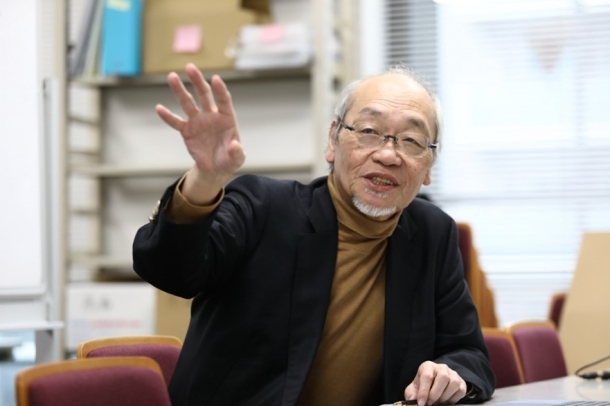
GOTO Haruhiko (Director/Professor, Faculty of Science and Engineering)
──Please tell us about the concept of “Medicine-Based Town (MBT).” What is your goal?
This research, which focuses on the pursuit of “human health” and “urban sustainability” as well as the necessary exchange between medicine and urban planning, was initiated by Professor Hosoi Hiroshi (Chairman and President) of Nara Medical University. It started as a study on “housing medicine,” a style of housing that helps prevent illness and maintain health, but MBT is a further development of this concept, expanding it to urban development.
In 2012, we received an offer from Nara Medical University, which was seeking urban planning experts, and began joint research with Waseda University. Both universities have research institutes with the same name, and both work under the slogan “Healthy people, healthy towns.” In 2015, Waseda University positioned it as one of its priority research areas, and in 2020, it joined the Comprehensive Research Organization as a Project Research Institute.
–Medicine and urban planning seem like completely different fields, so what is the background to the connection between the two?
In fact, this idea dates back more than 100 years, and one of its predecessors was Goto Shinpei, who was active in politics during the Meiji and Taisho periods. He led the reconstruction of Tokyo after the Great Kanto Earthquake, and Goto, who was also a doctor, is said to have promoted urban development based on the “principles of biology.” Around the same time, Scottish scholar Patrick Geddes also proposed an urban theory based on biology. As cities modernized and their populations grew, it became inevitable that they would be linked to medical care and health.
In terms of modern circumstances, in the case of Japan, the problem of a declining birthrate and aging population is a major factor. National medical expenses in the fiscal year 2023 will be approximately 47.3 trillion yen. This accounts for approximately 8% of the gross domestic product (GDP), and is clearly putting pressure on the Japanese economy. The highest medical expenses are incurred by people in their 60s and 70s, so improving the health of this generation should lower medical expenses, but it is not easy to reduce medical expenses for people who are already sick. If that is the case, then by targeting those in their 40s and 50s, who are at risk of developing illness, we may be able to reduce medical expenses 10 or 20 years from now. In other words, by improving the urban environment with a focus on health, we can prevent the onset of illness in people who are not yet ill and revitalize society. This is the problem that was the starting point of our research.
◆Energizing the entire community through a “sense of mutual health”
–That shows how closely related people’s health is and the urban environment.

Created by Professor GOTO Haruhiko
That’s right. Take a look at this diagram (see left). It shows “multiple senses of health,” with the upper side of the horizontal axis divided into an “individual’s (one person) health” and the lower side divided into a “social group’s (everyone) health,” and the left side of the vertical axis divided into “objective” and the right side divided into “subjective.” Of these, physical health, mental health, social health, and public health, which are included in the objective health on the left side, are areas that are mainly the responsibility of medicine.
In contrast, for example, when you feel “I feel heavy/sluggish today,” this corresponds to the subjective sense of health of an individual on the right side. If you combine these and collect the subjective feelings of many people, it leads to the sense of health of the entire community. This state is between the subjective and the objective, so it can also be called “intersubjective.” I call this “mutual health,” in the sense that by people belonging to a community supporting each other, modern problems such as loneliness and a society without ties can be overcome. These subjective aspects are outside the realm of medicine, so they cannot be treated at a hospital. That is why it is meaningful for us to take on this issue.
In fact, previous research has shown that people with a high sense of subjective health have a longer life prognosis, meaning they can live longer after illness or surgery. The World Health Organization (WHO) has also recently begun to point out the importance of subjective health. So how can we improve that sense of subjective health? We believe that for individuals, it is related to improving the living environment, such as homes and buildings, and for social groups, it is closely related to urban development.
How is MBT thinking and research spreading?
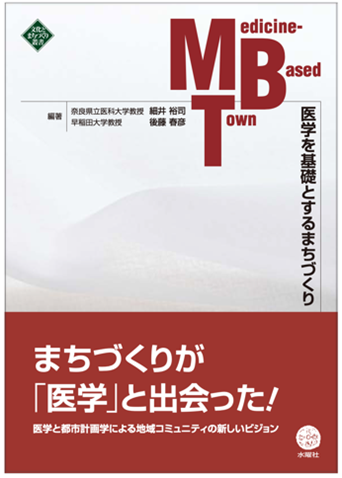
“Medicine-Based Town” (Suidosha)
In January 2014, Professor Hosoi and I co-authored a book entitled “Medicine-Based Town” (Suiyosha). The following year, we presented it at the General Assembly of the Japanese Medical Association, and I think it attracted a lot of interest. I myself had previously thought that an academic field such as urban planning would not delve into areas related to the human body, but I realized that it might be possible to approach this from the perspective of subjective health, and so I began this research.
Looking at current research activities related to health and urban development, in addition to Nara Medical University and Waseda University, efforts being pursued by Comprehensive Research Organization, as well as a venture company spun off from the University of Tsukuba called Wellness Research, are also catching our eye. Both are looking to contribute to future social security systems for the elderly, with the former researching the state of local communities, including home medical care and senior housing, and the latter researching the form of a Smart Wellness City where everyone can be healthy.
It is true that many researchers are now turning their attention to the relationship between medicine and cities. This is being spurred on by the recent social trend of pursuing “well-being.”
◆Medical care “in the town” to be undertaken by making the most of the old “townscape
–Could you please tell us about your specific efforts? What kind of research activities are you pursuing?
We are working on the “Imaicho Annex” project together with Nara Medical University. Imaicho is an old town in Kashihara, Nara, that flourished during the Edo period. Many townhouses that convey the atmosphere of those times remain here and there, and the area has been designated as an Important Preservation District for Groups of Traditional Buildings. The project aims to develop “urban medical care” and “urban landscapes” in an integrated manner in the area that connects the nearby hospital attached to the medical university and the new campus of the university that is scheduled to be built soon.
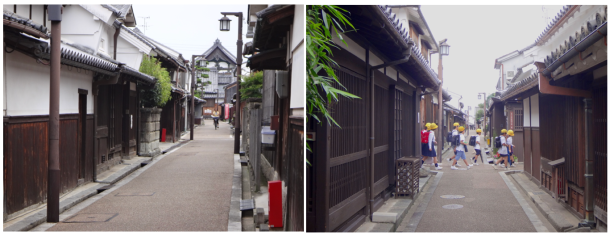
Imaicho streetscape that retains traces of the Edo period
The preservation district stretches 600 meters from east to west and 310 meters from north to south and is home to a total of about 760 houses, of which about 500 are traditional buildings. However, as the population declines, vacant houses are becoming more noticeable, but because it is a preservation district, they cannot be demolished or rebuilt without permission. Is there any way to preserve this townscape and revitalize it as a medical and health town? This is the idea that led to the start of our activities.
So we came up with the idea of incorporating some of the functions of the medical school into the traditional townscape, and providing medical care between the hospital and homes. Because it is a town from the medieval ages, the roads are narrow and cars cannot enter. This makes it more suitable for rehabilitation such as wheelchair training and walking training. We proposed that if we accepted patients in the recovery stage in such an environment, we could provide much more human support than if we did it in a hospital corridor.
They are also bringing art therapy, horticultural therapy, music therapy, and exercise therapy into the town, and building communal housing with care services, accommodation for patients’ families, and rehabilitation facilities for residents to stay in after being discharged from the hospital until they return home. They are making effective use of vacant houses for these purposes. In fact, Waseda students have been staying in renovated tenement houses to conduct health tests and workshops for local residents. The medical school has built a guest house for foreign researchers, where doctors hold health consultations for local residents. There are also countless other ideas, such as after-school children’s clubs and women-only share houses.
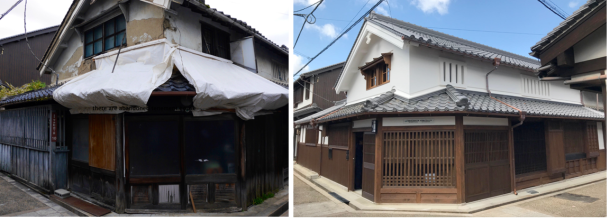
A dilapidated vacant house renovated into a guesthouse for foreign researchers
◆Aiming to expand nationwide from rural areas to the suburbs of large cities
–This is very empirical and practical research. Its social significance has been recognized and it has been adopted for a public grant program.
Imaicho Annex was selected as a Strategic Research Promotion Program (Social Technology Research and Development) by the Japan Science and Technology Agency for its contribution to “Designing a Sustainable Multigenerational Co-Creation Society.” In addition, a separate research project from Imaicho has received funding from the Agriculture, Forestry and Fisheries Policy Science Research Commission. This is an effort to create a sixth industry through “rural health tourism.”
The sixth industry combines primary, secondary, and tertiary industries, and is generally known as the collaboration between agriculture, industry, and commerce. For example, producing food, processing it into food, and selling it at restaurants. However, it goes beyond that and can also be considered as collaboration between agriculture, industry, and medicine. Cultivating herbal medicines, processing them into herbal medicine, and using them in medical treatment.
It is possible that Chinese medicine could be linked to horticultural therapy and developed into medical tourism. What’s more, it could be expanded from farm restaurants to farm stays and medical tourism.
We have focused on this and are proposing a “sixth x n industrialization” in rural areas, placing medical tourism at the highest level of the tertiary industry and returning the results to the creation of the local landscape while also bringing positive effects to the primary industry.
Based on this, we planned a medicinal herb tour in which participants would stroll through rural areas in Nara Prefecture, pick medicinal herbs, experience farm work, enjoy lunch, and also take part in a medicinal herb workshop. Two types of medical surveys confirmed that although participants were physically tired from farm work, their health condition actually improved and their mental fatigue decreased. Benefits were seen in both objective and subjective health. Students acted as guides for this tour, in the hope that participants would also feel a greater sense of health by strolling around while learning about the wisdom of rural life.
In another survey, we investigated the relationship between subjective health and the living environment. We targeted seven districts with completely different profiles, including city centers, residential areas, commercial districts, and senior living areas, and had a dozen middle-aged and elderly people participate in each district to see how subjective health changed depending on “cognitive environment,” “physical environment,” “generation,” and “gender.”
Interestingly, the results showed that regardless of age, gender, or where people live, only one factor, “cognitive environment,” correlated with subjective health. In other words, the more people know about the town they live in, the higher their subjective health. This is one piece of evidence that shows the connection between town development and medical care/health.
–If the physical environment is not an issue, it seems possible to promote health in various regions across the country.
That’s right. Dr. Hosoi also pointed out that, saying, “There are about 80 medical schools in the country, so we should be able to do the same thing we did Imaicho across the country.” We know that if subjective health improves, life expectancy will be longer, so subjective health is important to extend healthy lifespan, and to do that, we need to find ways to get people to take more interest in the area where they live.
With this in mind, we are also working on a project to revitalize residential areas in the suburbs of the Tokyo metropolitan area in collaboration with Waseda University’s Architecture and Urban Planning Research Factory. The era of large city growth is over, and vacant lots and houses have become more noticeable in the suburbs. The depopulation in mountainous areas and the shuttered shopping streets in regional cities are also major issues, but the problem of shrinking suburban areas of metropolitan areas remains untouched. To address this issue, we are working on activities based on a vision for re-editing urban areas, which we have named “Interknitted Town,” with Koshigaya City, Saitama Prefecture, as a demonstration field.
──Interknit means to knit together.
Yes. We will weave the necessary functions into suburban towns where various “holes” are beginning to appear. If the creation of advanced smart cities is like the world of a loom, then we are in the world of hand-knitting. We intend to continue our steady and effective empirical research.
